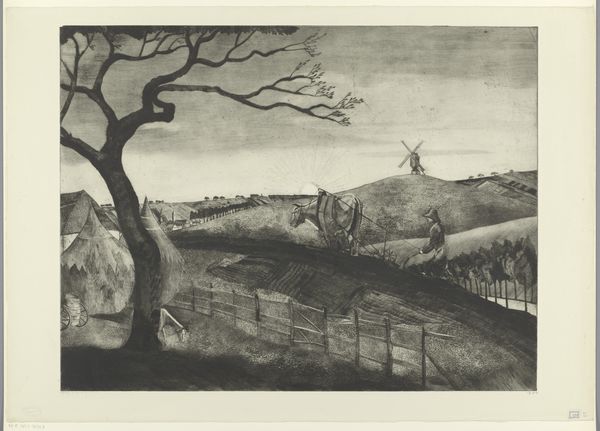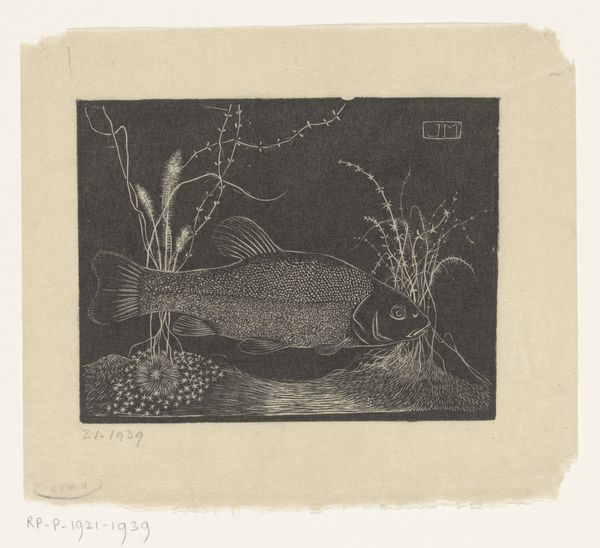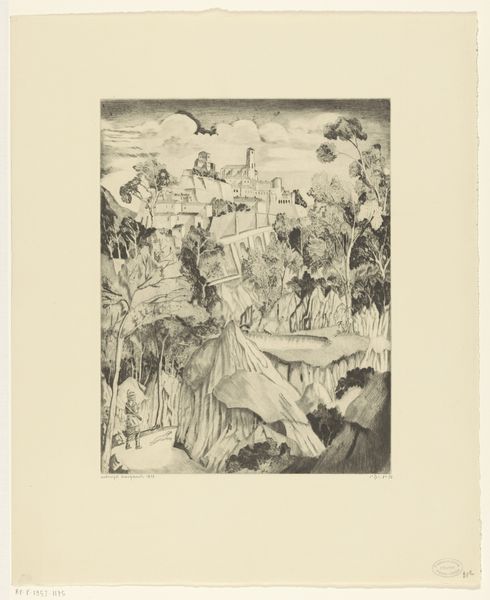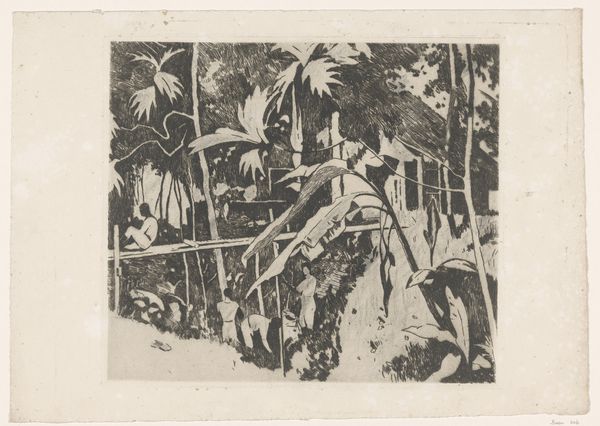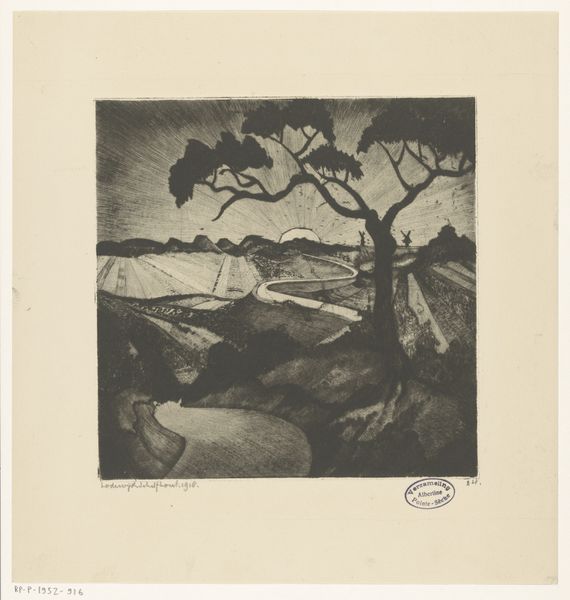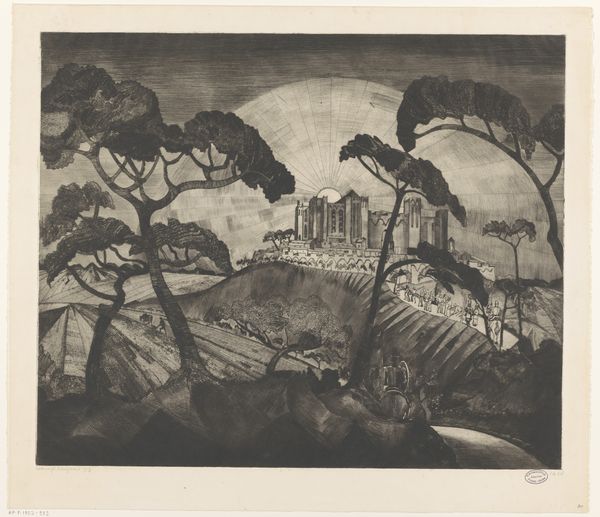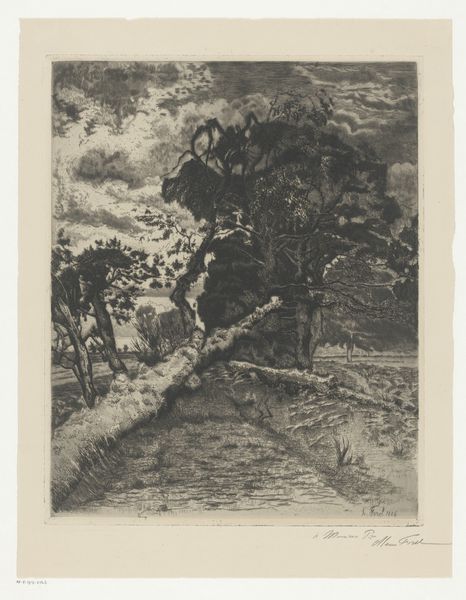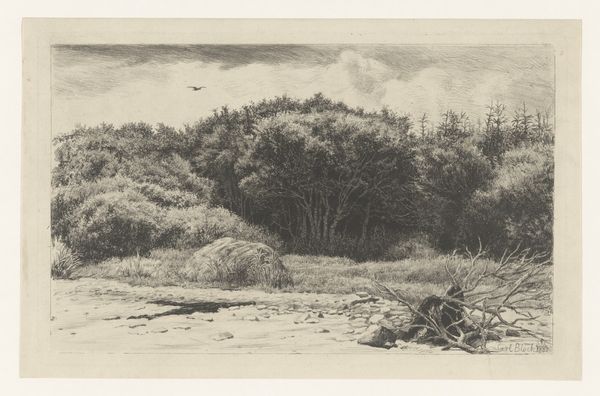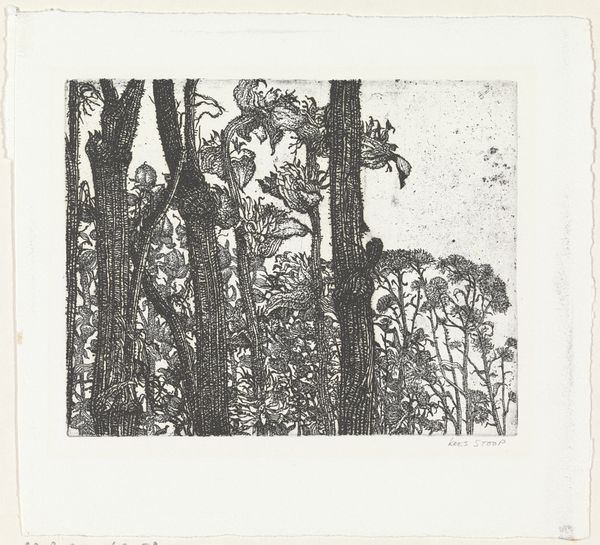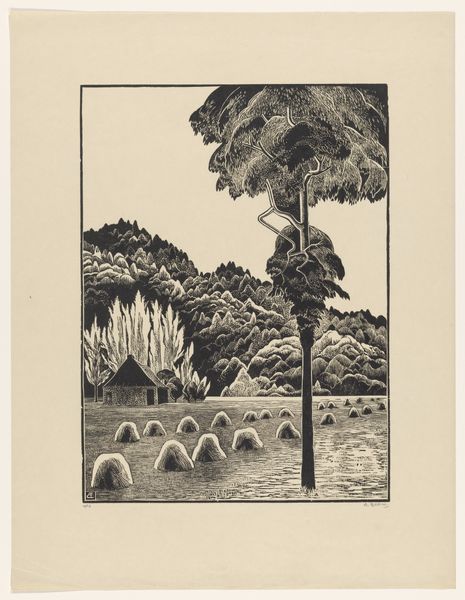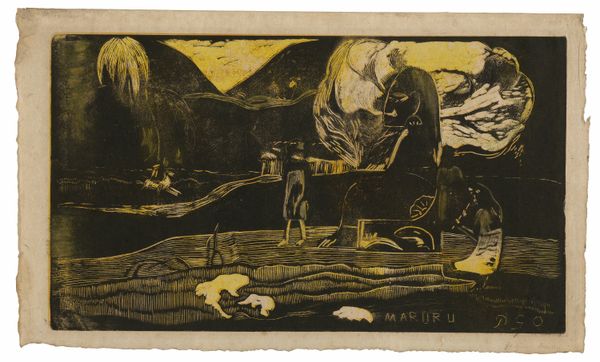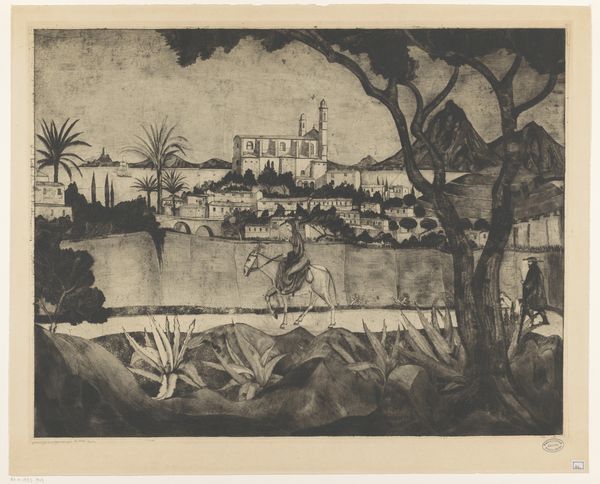
print, etching
# print
#
etching
#
landscape
#
figuration
#
realism
Dimensions: height 497 mm, width 593 mm
Copyright: Rijks Museum: Open Domain
Curator: Here we have Lodewijk Schelfhout's etching from 1925, "Herder met een kudde schapen in een heuvellandschap" or, "Shepherd with a flock of sheep in a hilly landscape." It resides here at the Rijksmuseum. What is your first reaction to it? Editor: It feels strangely… lonely. There's a quiet intensity in the way the shepherd stands so still amidst the flock. Almost like a sentinel guarding not just the sheep but also the landscape itself. A landscape etched, quite literally, with time and a rather solemn air. Curator: Interesting. It's quite evocative, isn't it? This etching, and Schelfhout's work in general, engages with the broader Realism movement of the time. Realism celebrated the mundane realities of life. The etching reflects a pastoral scene and the quiet dignity of everyday labour. However, there's certainly a layer of constructedness, of romanticizing labor here. Editor: True, the idealized form definitely seeps in. Even though it's supposedly rooted in Realism, there is a noticeable romantic sensibility, bordering almost on symbolist terrain, or maybe I just imagine. The repetition of shapes and dark, muted palette kind of stir those depths for me. Curator: That contrast is key! While presenting an outwardly accessible image of rural life, the deliberate composition points towards how societal forces, from market demand to cultural expectations, impact the art being created, reflecting nostalgic sentiments. Schelfhout walks a delicate line, offering accessibility and engaging critically with traditional themes in landscape art. Editor: And yet, despite my deconstructive efforts, I am oddly soothed by it, you know? I would not mind having this around. Its quiet simplicity does kind of offer an escapist window—like those Dutch Masters landscape scrolls… though they had fewer sheep. Curator: The politics of the pastoral is forever complex! These landscapes were always designed as a retreat, a way to reconcile city life with nature. Editor: Ultimately, I'd say, in this relatively small print we find layers, paradoxes, and even beauty to unpack… quite a good day at the museum if you ask me. Curator: Indeed. Schelfhout makes us rethink how we view not only art history but its connection to our evolving perceptions of reality itself. Thank you for your insight!
Comments
No comments
Be the first to comment and join the conversation on the ultimate creative platform.
